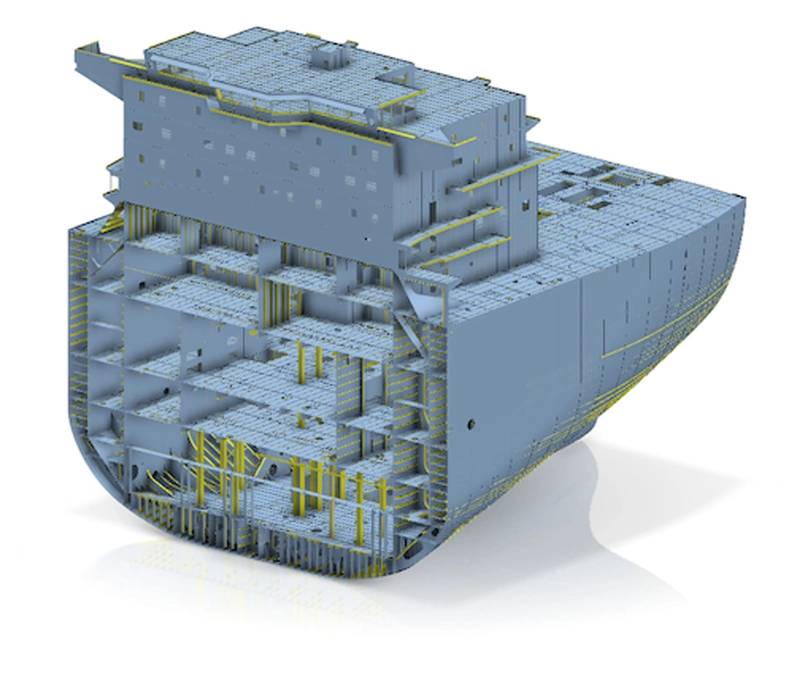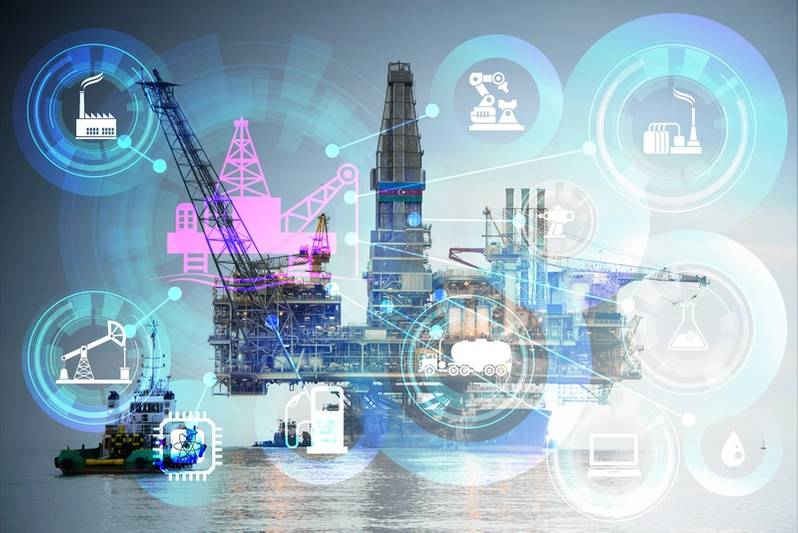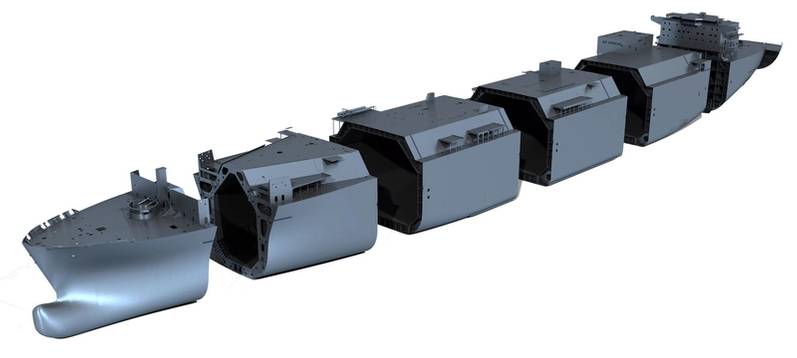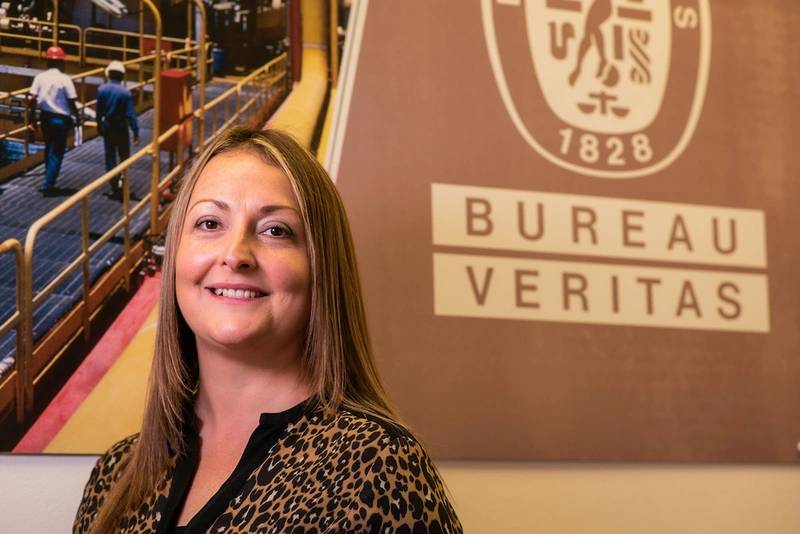Offshore: Digital Twinning & Reduced Operating Cost Offshore
The oil and gas industry is currently enduring one of the most challenging periods in its history. The impact of the COVID-19 pandemic significantly accelerated an existing decline in global demand for hydrocarbons, resulting in the lowest oil prices for 30 years. This has left the industry facing the dual challenge of ensuring successful and safe working conditions and practices for employees while maintaining the economic viability of assets.
How can operators maintain, or even raise, safety standards and address maintenance challenges while reducing cost?
One area that has the potential to present significant opportunities is a greater adoption of digital technology, most specifically in improved asset integrity management.
With attention increasingly on remote operations to maintain the economic viability of assets, increase safety and reduce risk, the current situation represents the perfect window for digitalization to make a quantum leap from a ‘want’ to a ‘need’.
An aspect of this shift in focus is the growing adoption and recognition of the benefits of digital twinning i.e. the creation of a mirror image of an asset to support integrity management.
At the forefront of this cultural change is Bureau Veritas, a leader in testing, inspection and certification services, which has created a proven and ‘boxed’ digital twinning and smart data management system that is already helping to generate significant reductions in unit operating costs and capital expenditure.
The company’s Veristar AIM3D system, developed in partnership with Dassault Systèmes, provides a true, as is, four-dimensional picture of an asset’s condition instantly, everywhere on any platform or device, at any time.
Veristar AIM3D (VAIM3D) combines a digital twin of any marine or offshore asset with smart data. It improves visibility and understanding of the asset, allowing operators to make the right choices faster to improve efficiency, safety, integrity, performance, return on investment, and carbon footprint reduction.
 Digital Twin Cross Section. Image: BV
Digital Twin Cross Section. Image: BV
The digital twin, linked to a comprehensive asset integrity management database and collaborative platform that will interface with any system the asset owner has - and is specifically designed not to replace existing infrastructure - can be accessed by all personnel.
The model, which provides a 360º view, is constantly updated throughout the asset’s life. Any changes made within the systems it interfaces with are immediately reflected in the VAIM3D twin. Through its integral project management module capability, it allows shutdowns and turnarounds to be optimized, significantly reducing planning time, and it allows the preparation of maintenance and modification workpacks, to be done remotely.
It assists in the execution of, and preparation of maintenance and inspection reports, and the results are automatically visualized in the twin to reflect the asset’s real condition.
Furthermore, it helps operators anticipate issues, easing the move toward predictive asset management, bringing with it reductions in operational costs, inspections, maintenance, and repairs. Bureau Veritas, with one of its clients, has estimated digital twinning is reducing hull maintenance costs (OPEX) by 25% over five years.
For remote operations or where assets have been de-manned, the monitoring of equipment has traditionally been an expensive operation. However, the introduction of 4G or 5G connectivity has significantly reduced such costs allowing data to be fed back into the digital twin and enabling a rapid assessment of equipment or asset integrity.
With the benefits of a digital twin system well established in cutting maintenance costs, maintaining safety and performance, and extending asset life, Bureau Veritas then considered its benefits to the decommissioning sector.
It was assessed that the value from digital twinning could be realized across a range of spheres, including environmental, societal, wells, the asset, and regulatory requirements. Digital twinning was identified as a method of improving the definition of work scope, the quality of proposals, and execution efficiency while lowering estimated and actual costs.
Benefits for the supply chain include: the provision of a mirror image of an asset which everyone can view and estimate against the ‘as it is’ information; mitigation of inconsistency across tenders; the elimination of additional cost due to access and egress issues on site; a compilation of accurate engineering work packs with minimal requirement for site visits; more fixed price certainty, and time and opportunities to evaluate alternative scenarios, approaches and technologies.
 Digitalizing Offshore. Image: BV
Digitalizing Offshore. Image: BV
From a safety perspective, digital twinning enables virtual simulation to run hazardous activity without a physical presence and thereby eliminate or mitigate risks; familiarization with an asset prior to the mobilization of personnel; the laydown and storage of plant and equipment offshore; links into Permit to Work (PTW) systems and the simulation of access and egress from hazardous operations for personnel. In the UK, a rundown of the safety case through visualization reduces the requirement for the Health and Safety Executive to make on-site visits.
By providing a visualization of risks through simulation and respective mitigation, digital twinning can provide insurers and underwriters with a better understanding of the risks and control measures being taken. A greater appreciation of the decommissioning project may assist in driving down premiums. Indeed, insurers have suggested such increased visibility could remove a zero from the cost of premiums.
For operators, digital twinning represents an opportunity to reduce costs through optimization, efficiency gains, collaboration and the potential for improved relationships with regulators and the broader supply chain.
The broader values to the industry include standardization of approach and processes, a reduction in carbon footprint through fewer site visits and better scheduling of vessels, the ability to manage across a portfolio of assets simultaneously, potential economies of scale and the simulation of a range of infrastructure and topsides assets.
Bureau Veritas discovered that by using its digital twin and smart data system, operators could save between 9% and 15% on total decommissioning project costs. Data from the company, which was shared with the UK industry regulator the Oil and Gas Authority, showed operators could save more than £2 million on project costs for assets with topsides of 10,000 tonnes, increasing to more than £8.5 million for assets with topsides up to 40,000 tonnes.
Furthermore, following several months of data gathering and refining, it was identified that savings from 9% to more than 30% could be made from a range of decommissioning activities including topsides and jacket removal (14% and 11% respectively), subsea infrastructure (19%), facilities de-energizing (more than 30%), operator costs (15%), onshore recycling (10%) and site remediation and monitoring (10%) to deliver direct savings on total project costs.
Taking the figures for subsea infrastructure as an example of how the percentage reductions were achieved, the value generation on future deployments was identified as a 19% cost reduction on the work breakdown structure (WBS) for infrastructure removal.
This is based on a 15% reduction on vessel costs (typically these account for 80% of the WBS subsea infrastructure costs) and a 35% cost reduction in the remaining 20% of the subsea infrastructure WBS activities which includes planning, managing removal, weight assessments (CoGs), geographical positioning of subsea items, simulation of removal and seqencing optimization.
Bureau Veritas has identified a total of 54 North Sea assets with topsides of 10,000 - 40,000 tonnes that would benefit from using a digital twinning system to gain direct savings in decommissioning. It has also identified 35 assets of fewer than 10,000 tonnes that would benefit from the use of a digital twin in late-life operations through to decommissioning phases.
With decommissioning a hard cost on a balance sheet, the need for efficiencies and cost reduction is clear, as outlined in the UK Oil and Gas Authority’s Decommissioning Strategy. The results from Bureau Veritas indicate digital twinning could save millions of pounds on overall project costs and enable operators to make smarter, more cost-effective choices.
The future for the greater adoption of digital twinning is positive, and demand is growing. Bureau Veritas has developed bespoke systems for several operators and is considering projects for the digital twinning of topsides decommissioning and an entire subsea field.
Like any system, a digital twin is only as good as the information fed into it. The technology deployed is well proven across a number of industries and generates operator trust by providing much greater visibility and understanding of the asset. One instant benefit of enhanced asset visibility is data rationalization. Where previously low-quality information could exist within a system for years, the construction of the twin allows poor data to be identified immediately. It also enables the identification of areas with insufficient or excessive data and an improvement in the type and quality of data available.
The common response from the industry to increased digitalization and the adoption of digital twins has been “I’m not sure our company is ready for this.” Our response to this would be: ”If not now, then when?” As the industry recoils from the double blow of COVID-19 and a low commodity price, and while we have a trusted and proven way to reduce unit operating costs, can companies continue to afford the luxury of indifference, particularly when their very survival may be at stake?
 Image: BV
Image: BV
 The Author: Dawn Robertson holds an MBA achieved in 2015 and a BA(Hons) from Robert Gordon University. She is a qualified and experienced Senior Manager/Director with over 15 years strong commercial and business improvement experience and is currently the Global Business Development Director – Offshore & Services for Bureau Veritas. Dawn is also the Decommissioning Leadership Group Chair and Board Vice Chair of Decom North Sea.
The Author: Dawn Robertson holds an MBA achieved in 2015 and a BA(Hons) from Robert Gordon University. She is a qualified and experienced Senior Manager/Director with over 15 years strong commercial and business improvement experience and is currently the Global Business Development Director – Offshore & Services for Bureau Veritas. Dawn is also the Decommissioning Leadership Group Chair and Board Vice Chair of Decom North Sea.
 The Author: Neil Pickering has over 30 years oil and gas industry experience and has undertaken various roles throughout his career. Graduating from Durham University Business School in 1997 Neil moved into senior management roles. His most recent roles are; Technical Director Operations & Maintenance, VP Assurance and currently Head of Business Development & Sales North Sea Offshore Operations with Bureau Veritas. A chartered manager and Fellow of the Chartered Management Institute and board member.
The Author: Neil Pickering has over 30 years oil and gas industry experience and has undertaken various roles throughout his career. Graduating from Durham University Business School in 1997 Neil moved into senior management roles. His most recent roles are; Technical Director Operations & Maintenance, VP Assurance and currently Head of Business Development & Sales North Sea Offshore Operations with Bureau Veritas. A chartered manager and Fellow of the Chartered Management Institute and board member.














